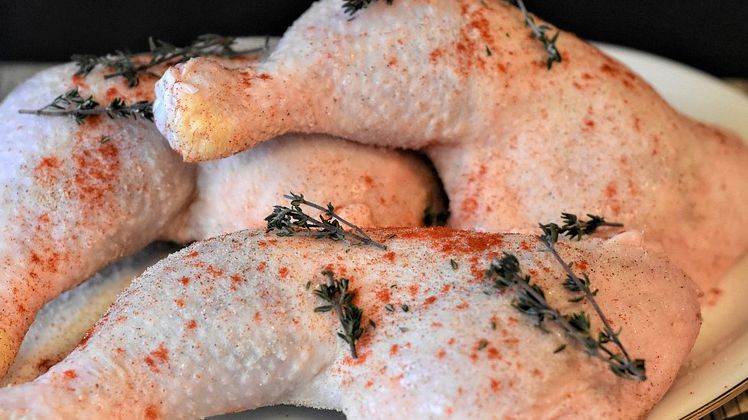
Scientists from the Ural Federal University and the Institute of Electrophysics of the Ural Branch of the Russian Academy of Sciences developed a new method of destroying pathogenic microorganisms in chicken meat production by surface treatment with radiation, reports the press service. UrFU reported on February 20.
A study of the proposed method has shown its effectiveness in the destruction of Pseudomonas aeruginosa, salmonella and the most dangerous pathogens such as Staphylococcus aureus and Listeria in chicken meat.
The developers claim that after the proposed treatment, contamination (the content of bacteria in the product) is reduced by 2-3 times, which increases the shelf life of the product several times. The new method provides great benefits to Russian meat and poultry plants.
The authors of the development presented detailed information on the method and ionizing radiation in the article “Antimicrobial radiation surface treatment of poultry meat and offal using a low-energy nanosecond electron beam”, published in the journal Radiation Physics and Chemistry.
Senior researcher of the Department of Experimental Physics of UrFU, Ruslan Vazirov, spoke about the advantages of the developed method:
“Treating chicken meat with ionizing radiation is effective, since microorganism contamination is reduced more than twice. This increases the life of the product; For example, refrigerated meat is stored for about seven days, but after processing the shelf life increases to one month. This is a great advantage not only for consumers, but also for companies that produce chicken meat, since extending the shelf life allows increasing logistical capacity and transporting products to distant and difficult-to-access markets, for example to China.”.
Currently, chicken meat in meat processing plants is chemically or thermally processed for disinfection. However, unlike ionizing radiation, the use of these methods can change its physicochemical composition and reduce the nutritional value of the product.
Another advantage of ionizing radiation is the ability to process already packaged products, which is impossible with traditional disinfection methods.
“Treating products with ultraviolet light or chemicals are types of exposure when the product is not yet packaged. And irradiation in this sense greatly simplifies the process: you can package the product and then process it, and the chicken meat will not be contaminated again.””explained Ruslan Vazirov.
When processing products with a low-energy electron beam, the impact extends to a depth of 2 to 4 mm and penetrates through the packaging material. The processing is done by electron beams moving in one direction.
These rays are generated by a special installation – the URT-1 or URT-0.5 nanosecond accelerator. They were developed at the Institute of Electrophysics of the Ural Branch of the Russian Academy of Sciences. The URT-1 accelerator allows, by changing the configuration, to perform treatments with different doses of radiation.
According to the GOST standards of Russia, the International Atomic Energy Agency (IAEA) and the Food and Agriculture Organization of the United Nations (FAO), the maximum permissible irradiation dose for meat products is 10 kGy. In this case, there is no significant change in the nutritional value and taste of the product. The lower limit is determined by the manufacturer.
“In chicken meat production plants, the level of contamination can vary and it does not always make sense to use a large dose of radiation. In our study, we found that for effective treatment, a dose of 1 kGy to 10 kGy should be applied. “Each company must determine which dose to choose independently.”said Ruslan Vazirov.
In Russia, the processing of food products with ionizing radiation is currently not common due to the fairly stable radiophobia that has established itself in society. Therefore, in order not to lose market, manufacturers use other methods to disinfect chicken meat.
“Most consumers, when they hear the word “radiation,” remember Chernobyl and think it is necessarily bad. However, radiation treatment is an effective method of preserving food from pathogenic microorganisms, especially since about 30% of all food produced in the world is lost due to spoilage, including by microorganisms.”, Ruslan Vazirov completed his explanations.
Source: Rossa Primavera
I am Michael Melvin, an experienced news writer with a passion for uncovering stories and bringing them to the public. I have been working in the news industry for over five years now, and my work has been published on multiple websites. As an author at 24 News Reporters, I cover world section of current events stories that are both informative and captivating to read.
